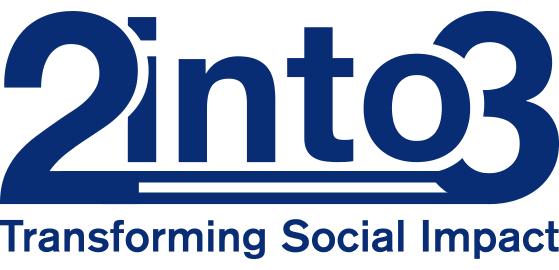
Each year, nonprofit organisations dedicate extensive time and energy to producing their annual reports. The Annual Report is the perfect medium to showcase your strategy and operations, and also to signpost your future direction. Yet, too often, the full potential of these documents is underleveraged. Far beyond a compliance exercise, the annual report holds substantial value—both explicit and implicit—across strategy, governance, communication, and accountability.
How organisations can unlock their full potential:
The Process Itself: Reflection and Strategic Articulation
Before a single paragraph is drafted, the development process forces introspection. What story are you telling about the past year? More importantly, what vision are you setting for the years ahead? Annual reports compel leadership to revisit their strategic intent, assess progress, and reiterate priorities.
This isn’t simply about retrospective narrative (or reverse engineering your success story). It’s an opportunity to consolidate strategy, frame achievements, and articulate future direction in a compelling, cohesive voice. The process refines internal alignment and creates clarity across the board.
This also requires an element of co-creation. Annual Reports should not just be the output of the communications team and CEO, but ideally should involve the wider staff and stakeholder eco-system.
Spotlight on Priorities: Defining Who You Are
The Annual Report should capture the essence of your organisation—its mission, core services, values, and impact. Through a concise overview (and Exec Summary), it’s a chance to summarise and reinforce what matters most to the organisation, which can then be further illustrated through more detailed storytelling.
This clarity serves a dual purpose, it helps to build internal cohesion amongst internal stakeholders. And it provides external stakeholders with a reliable reference point and a single comprehensive and credible source of information on your organisation.
Demonstrating Governance Beyond Checkbox Compliance
It is a fair point that elements of good governance in practice, are a box-ticking exercise. But demonstrating good governance is more about culture than checkboxes. The Annual Report can be a testament to this, with tangible illustrations of governance principles (Charities Governance Code) in action:
1. Advancing Charitable Purpose
2. Behaving with Integrity
3. Leading People
4. Exercising Control
5. Working Effectively
6. Being Accountable & Transparent
By clearly evidencing principles, showing transparency in decision-making and financial clarity, explaining your approach to risk management and mitigation to heighten strategic resilience, and ‘living’ accountability through stated compliance and adherence to relevant legal and ethical standards, you establish credibility, reassure stakeholders, and meet increasing expectations around organisational integrity.
Communication, Credit and Content
Communication doesn’t end with publishing a report. A well-optimised Annual Report should be an integral and integrated part of the organisation’s communications.
It should be easy to access on two fronts: Firstly, it must be easy to find if searched for either vie search engines or on your website; and secondly it should be accessible or available in accessible formats for inclusivity.
Most nonprofits have a stakeholder map that is broad and deep. All should be informed of the Annual Report and its salient sections to them. This is an invaluable opportunity for your organisation to reach out to your stakeholders (annually) in a meaningful way.
Also worth considering is how stakeholders are recognised in the Report. Such
recognition, and giving credit where it’s due, is a powerful driver and consolidator of engagement and trust. It’s an opportunity to credit staff and volunteers, to give a voice to service users and their lived experiences, and to thank and name-check donors, funders, and partners.
The content of a good Annual Report has infinite re-purpose opportunities – on social channels, funding decks, community updates, infographics, Briefing Papers, press releases and statements, Consultations, blogs, etc. Adaptability in the Annual Report content format, broadens your reach and reinforces your message.
Include Impacts as well as Outputs
What matters should get measured and that goes beyond the obviously tangible outputs of your organisation, to include the sometimes less tangible and even contributory impacts of your organisation. Speaking to this in your Annual Report gives strategic context to your work and outputs, and allows you to show alignment with other stakeholders’ (partners, collaborators, policy influencers, etc.) remits and purposes. This in turn can further support ongoing and future engagement and discussions.
Now that the Corporate Sustainability Reporting Directive (CSRD) is in place, there is a benefit to your Annual Report mirroring some of the CSRD language and structured impact reporting, especially the S (social) pillar of ESG. Many nonprofits’ Annual Reports will likely already cover Community engagement, but other relevant CSRD areas worth including are: Labour practices and employee wellbeing, Diversity, Equity, and Inclusion (DEI), Human rights due diligence, Ethical commitments and service user satisfaction. The General Disclosures of CSRD also provide a model for how to assess Impact, Risk, and Opportunity, including setting and reporting on quantifiable metrics and targets. This moves beyond anecdotal success to strategic evidence of progress.
Transparency in Financial Performance – Don’t Sideline Difficulties
To quote Molière, “It is not only what we do, but also what we do not do, for which we are accountable.” Embracing accountability means not shying away from financial realities. An Annual Report that avoids explicitly articulating challenges or failures undermines its credibility. Embedding the financials within the narrative provides stakeholders with important context regarding areas such as financial sustainability, operating margins, reserves and resource allocation. Being forthright about risk, setbacks, and lessons learned demonstrates maturity, transparency and resilience.
It also can highlight year-on-year progress, challenges, obstacles and their potential remedies, and indicate your desired direction of travel and what will facilitate success. Surfacing both ambition and need through financial clarity (of the bad news as well as good), builds trust and can create an opportunity for deeper discussions on engagement and future support with influencers, donors and partners.
When it comes to communication, clarity instils confidence. And an Annual Report done right can be a crucial and potentially high-impact communication tool. It conveys reliability, builds confidence, demonstrates effectiveness, and invites participation. For nonprofit organisations navigating complex stakeholder environments, the Annual Report is a uniquely powerful vehicle to consolidate identity and messaging, strategy and impact, into a single, unified medium.
If you’d like to learn more on how you can make the most out of your Annual Report, get in touch with 2into3. You can also listen back to a collaborative webinar with Carmichael here.

